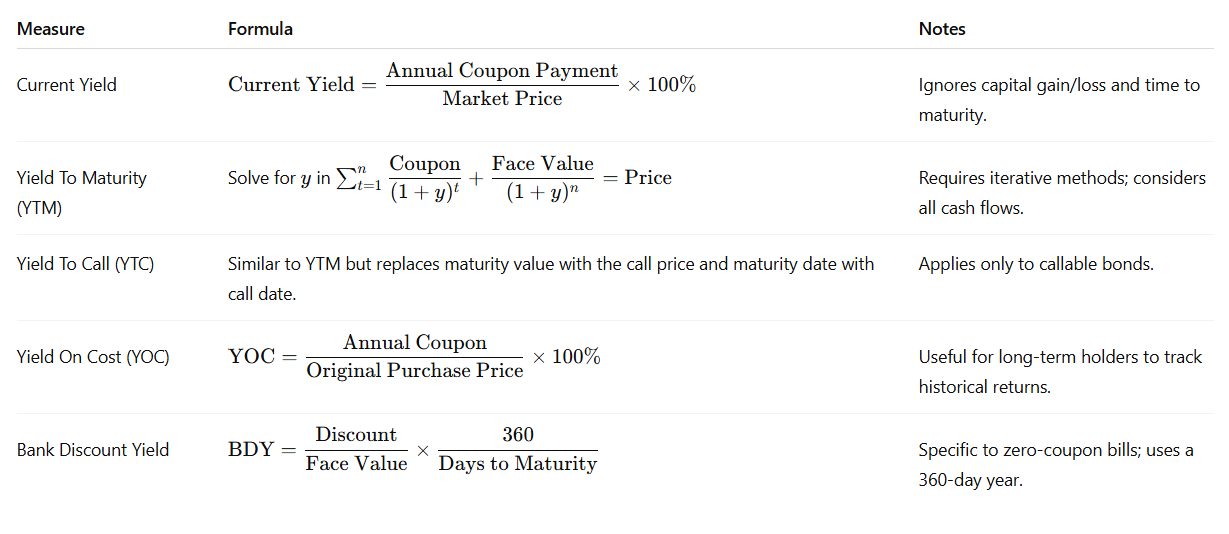
What Is Basis Yield?
Definition And Overview
Basis yield standardizes the evaluation of income returns on fixed-income securities relative to their market value. It goes beyond coupon payments to reflect the effective annualized return based on purchase price, face value, and any premium or discount. This allows investors to compare various debt instruments — like corporate bonds and government notes — on equal terms. By converting different cash flows into a single percentage, basis yield helps traders and portfolio managers better assess profit potential.
Why Basis Yield Matters
-
Reflects True Return: It accounts for both income (coupon) and capital gain or loss (price vs. face value).
-
Guides Relative Valuation: By comparing yields across sectors, maturities, and credit qualities, investors can identify undervalued or overvalued instruments.
-
Supports Tactical Allocation: Yield shifts often presage interest rate movements and credit spread changes, making basis yield a barometer for strategic positioning.
-
Enhances Performance Measurement: Rather than focusing on absolute coupon rates, professionals track basis yield to gauge whether their bond holdings outperform benchmarks or peer groups.
In essence, neglecting basis yield can lead to missed opportunities or unintended exposure, whereas leveraging it ensures informed decision-making and competitive advantage.
How To Calculate Basis Yield
Formula And Components
Calculating basis yield involves several pieces of information: the annual coupon payment, the bond’s face value, the acquisition price, and the time remaining until maturity. The simplest expression — commonly known as current yield — divides annual interest by the current price. However, more comprehensive measures like yield to maturity (YTM) or yield to call (YTC) incorporate the present value of future cash flows, including principal repayment and reinvestment assumptions.
Basic Yield Formulas

In practice, most trading platforms and financial calculators compute YTM or YTC by iterating internal rate of return (IRR) until the present value of expected payments equals the current price. Recognizing which formula to apply — and understanding its assumptions — is critical for accurate profit projections.
Step-By-Step Calculation Example
To illustrate, consider a corporate bond with the following characteristics:
-
Face Value (Par): $1,000
-
Annual Coupon Rate: 5% (paid semiannually, $25 per payment)
-
Current Market Price: $950
-
Maturity: 4 years (8 semiannual periods)
Step 1: Compute Current Yield
- Annual coupon payment = 5% of $1,000 = $50.
- Current yield = $50 / $950 = 0.0526, or 5.26%.
While 5.26% suggests a higher return than the 5% coupon, it does not account for the fact that the bond will mature at par ($1,000), generating an additional $50 of capital gain over four years.
Step 2: Estimate Yield To Maturity (YTM)
To find YTM, solve for yy in the present value formula:

Because this equation cannot be rearranged algebraically, one typically uses financial functions (e.g., in Excel: =YIELD(settlement,maturity,rate,price,redemption,frequency)) or a financial calculator. In this scenario, the semiannual YTM rate approximates 2.85% (5.70% annualized).
Step 3: Interpret the Results
-
Current Yield (5.26%) reflects only coupon income.
-
YTM (5.70%) incorporates the $50 capital gain spread evenly across eight periods and assumes reinvestment at the same rate.
- An investor comparing two bonds with different coupons or maturities would rely on YTM rather than current yield to assess which offers a superior total return.
By following these steps, one ensures a holistic grasp of potential returns and avoids misjudging investment merit.
Types Of Basis Yield
- Current Yield: Annual coupon ÷ current price. Simple income measure; ignores time value and price changes.
- Yield To Maturity (YTM): IRR that discounts all coupons and face value to current price. Accounts for capital gain/loss and reinvestment.
- Yield To Call (YTC): YTM calculation using call price/date instead of maturity. Shows return if bond is redeemed early.
- Yield To Worst (YTW): Lowest yield among YTM and all YTCs. Reflects worst-case return if the bond is called.
- Yield On Cost (YOC): Annual coupon ÷ original purchase price. Tracks return on initial investment.
What Yield Can Tell You
Assessing Income Potential
Current yield and YTM show cash flow relative to cost, helping traders identify bonds that meet income needs or liability schedules — e.g., a 4.25% municipal yield may be preferable after taxes.
Understanding Risk-Return Tradeoffs
Higher yields often imply greater default, interest-rate, or liquidity risk. Comparing yield with credit spreads and duration helps determine the premium needed for added risk.
Comparing Investment Opportunities
Yield percentages standardize returns across maturities, credit, and call features, enabling clear ranking — e.g., a 4.8% three-year corporate YTM vs. a 3.2% five-year Treasury.
Factors Influencing Basis Yield
Interest Rate Environment
Central bank policy decisions, inflation trends, and macroeconomic data drive benchmark rates, which in turn set the tone for bond prices and yields. In a rising-rate regime, newly issued bonds typically offer higher coupons, causing existing bonds to trade at lower prices — and thus exhibit higher yields. Conversely, a dovish or accommodative policy stance may push yields down as bond prices climb. Traders must remain vigilant, as subtle shifts in monetary policy expectations can ripple through yield curves, altering basis yield differentials across maturities.
Credit Quality And Ratings
Credit rating agencies assign letter grades to issuers based on default likelihood and financial health. Low-rated (high-yield or “junk”) bonds must offer greater yield to compensate investors for perceived risk, while AAA-rated government or investment-grade corporate debt typically commands lower yields. Credit rating changes — whether upgrades or downgrades — can provoke sharp yield adjustments. For example, an unexpected rating cut can send a bond’s yield spiking to reflect elevated default risk, even if its coupon remains unchanged.
Time To Maturity
Term structure, commonly depicted via the yield curve, relates maturities to expected yields. Longer-maturity bonds generally possess higher yields, as investors demand additional compensation for locking in funds over extended horizons and absorbing greater interest rate volatility. When the yield curve steepens — meaning yields at the long end rise relative to the short end — basis yield spreads widen. Traders often exploit such steepening or flattening shifts, adjusting duration exposures to capitalize on anticipated curve rotations.
Market Supply And Demand
Issuance volumes and investor appetite influence pricing dynamics. In periods of heavy issuance — such as when governments ramp up borrowing — yields might climb if demand does not keep pace with supply. Conversely, in “flight-to-safety” episodes, large-scale asset reallocations into government instruments can compress yields even if issuance is robust. Understanding cyclical patterns — fiscal year-end funding, syndicated loan repayments, or redemption windows — allows participants to anticipate supply-driven yield volatility.
Applying Basis Yield For Profit
Portfolio Allocation Strategies
Yield-focused portfolios mix maturities to balance income and duration risk. For example, a barbell strategy pairs short-term, lower-yielding notes with long-term, higher-yielding bonds. Monitoring basis yields across segments lets investors shift allocations when spreads change, capturing extra income without drastically altering duration. Laddered structures — bonds maturing at regular intervals — allow reinvestment at current yields, smoothing yield curve exposure over time.
Trading And Arbitrage Opportunities
Yield swings can create brief mispricings between similar bonds. For example, two issues from the same issuer — one callable, one not — might trade at different yields. Traders buy the cheaper and short the pricier bond, profiting as yields realign. Relative value tactics also exploit expected curve moves and spread tightening.
Using Yield Spreads To Spot Mispricing
A yield spread — the difference between two yields, such as corporate versus Treasury — reflects market sentiment. A wider-than-normal spread may indicate credit stress; a narrower spread can signal overcompression. Comparing current spreads to historical ranges highlights contrarian trades. For instance, if a BBB bond’s spread jumps well above its usual range without a credit downgrade, it could be a buying opportunity.
Common Pitfalls And How To Avoid Them
Ignoring Capital Gains And Losses
Current yield alone overlooks price changes at redemption. A high-coupon bond bought at a premium may yield less once capital loss is included. Always compare current yield with YTM and YTW for a complete return view.
Overlooking Market Conditions
Yields respond to economic cycles, central bank actions, and geopolitical events. A bond attractive last quarter may underperform after policy shifts. Maintain an economic calendar and monitor indicators — like inflation and employment — to adjust strategies before yield misalignments widen.
Misinterpreting Yield Comparisons
Yields aren’t directly comparable when day-count conventions, coupon frequency, tax treatment, or call features differ. For example, municipal bonds may look better on a tax-equivalent basis but less so if your tax bracket is lower than assumed. Standardize yield conventions and account for after-tax, after-inflation returns.
The Bottom Line: Basis Yield
Basis yield is central to fixed-income analysis, helping evaluate income opportunities, gauge risk, and identify arbitrage. By using measures like current yield, YTM, YTC, and YTW, investors can align strategies with their return goals, risk tolerance, and time horizon. However, yield figures alone aren’t enough — credit research, macroeconomic insights, and monitoring supply-demand trends are also essential. A holistic approach, grounded in solid yield calculations, enables traders and portfolio managers to navigate bond markets confidently.
FAQs: Basis Yield Explained
What Is The Difference Between Basis Yield And Current Yield?
Current yield = annual coupon ÷ price, ignores capital gains/losses. Basis yield includes total-return measures (YTM, YTW) that factor in time to maturity and all cash flows.
How Does Basis Yield Impact Bond Pricing?
Higher required yields ⇒ lower prices; lower yields ⇒ higher prices, since prices are the present value of future cash flows at that yield.
Which Yield Metric Should Traders Prioritize?
Use YTM for non-callable bonds and YTW for callable ones; current yield is only a quick screening tool.
Can Basis Yield Predict Future Price Movements?
Yield changes reflect market sentiment but don’t precisely forecast prices; yield-curve shifts offer directional clues.
How Do Changes In Interest Rates Affect Basis Yield?
Rising rates push yields up and bond prices down; falling rates push yields down and prices up.
